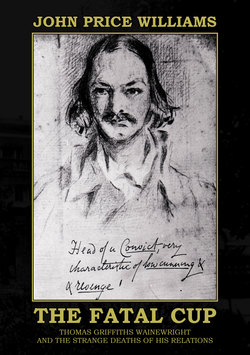Читать книгу The Fatal Cup: Thomas Griffiths Wainewright and the strange deaths of his relations - John Price Williams - Страница 33
На сайте Литреса книга снята с продажи.
ОглавлениеAs a psychiatrist, he would look in such a patient for anger brought on by a feeling of deprivation of love, or someone dying when he was young.
How closely Wainewright fits this diagnosis! His birth killed his mother, his father died while he was an infant leaving him to be brought up by a curmudgeonly grandfather in his seventies and his sharp-tongued grandmother, and provided for only grudgingly in the old man’s will.
It was about this time in the early 19th century, said Dr Burns that attempts were made to separate out different mental disorders and consider treating them in different ways. In 1801 Phillipe Pinel published Traité Médico-philosophique sur l’Aleniation Mentale; ou la Manie in which he described “manie sans delire” - insanity without delusions.
This was defined in the 1830s as “moral insanity” by James Pritchard of Bristol Royal Infirmary in his Treatise on Insanity and Other Disorders of the Mind. The condition is neatly defined by Duhaime’s Law Dictionary as a disease of the mind in which the individual is bereft of ethical judgment or feelings but still fully functioning intellectually. Later, it became relabelled as psychopathic personality. Here we have the template for a cold-blooded killer, possibly a poisoner, a crime regarded with particular horror because it is premeditated and usually achieved over a period by stealth, as the victim is gradually dosed to death. The Times, reflecting on the use of poisons for murder in 1865, wrote:
The poisoner may be a smooth-faced plausible person, without any external symptoms of
JOHN PRICE WILLIAMS
33
